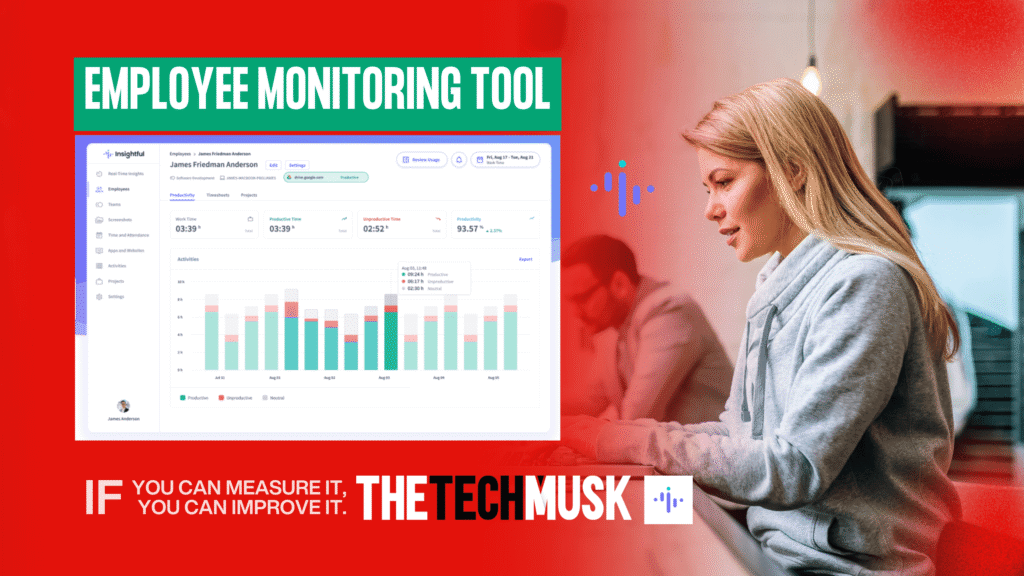Remote work isn’t measured by presence but by what actually gets done. When every hour starts to blur together, it’s easy to confuse staying busy with making real progress.
This article explores how work compression helps you get more done in less time by using shorter, focused work blocks without extending the workday. A tool for employee monitoring in the workplace gives you the visibility and data needed to support this shift toward high-impact work.
The Disconnect Between Time & Output
Without some structure, it’s easy for the day to get away from you. Things feel busy, but the work that matters often ends up scattered or half-finished.
Here’s where the remote work starts to lose its edge:
- Focus Drift: Time gets lost between distractions, app-hopping, and multitasking, leaving fewer quality hours for real output.
- Work Spread: When boundaries aren’t clear, tasks expand to fill the day, making it feel like work never really ends.
- Lack of Clarity: Without clear daily priorities, teams often spend too much time deciding what to do instead of doing it.
- Invisible Overwork: Without visibility into effort, high performers end up carrying more, while low output often goes unnoticed.
5 Ways to Make the Most of the Hours That Count
Work compression means getting meaningful work done in shorter, more focused blocks of time instead of stretching it across the whole day. It shifts the emphasis from being constantly available to making each working hour count through clear priorities and deep focus.
Here’s how to make that approach work in practice:
1. Designate Focus Windows
Designate 90-minute windows during peak energy hours for uninterrupted work. Cut meetings and multitasking during these blocks to protect deep focus. Start by identifying each team member’s most productive times using tracked data.
Clear unnecessary calendar blocks and set shared “focus hours” across the team. Use visible signals like status changes or check-ins to reinforce the habit. Over time, these focused blocks become reliable anchors in the day that support better output without longer hours.
How can common employee monitoring software support focused time blocks?
Common employee monitoring software highlights when real work is happening versus when distractions take over.
You might notice one of your team members is most productive between 9 and 11 a.m. Protect that window by keeping it meeting-free and encouraging them to mute notifications.
2. Set Tight Limits on Tasks
Set clear time limits for tasks to keep work focused and fast-moving. Instead of vague timelines, assign short windows, like 60 to 90 minutes, for specific steps. This sharpens attention and prevents tasks from dragging out.
Break larger work into smaller, timed chunks and stagger them across the day or week. Use time data to see where tasks keep dragging out, then tweak the scope or step in with support to keep things moving.
How can employee monitoring software improve task scoping?
Employee monitoring software uses tracked data to reveal how long tasks take. If a content review consistently takes twice as long as expected, you can adjust timelines or split the task across two team members to keep delivery on track.
3. Use Visibility to Reinforce Ownership
Use clear, accessible data to show your team how their time connects to output. Use dashboards or weekly reports to highlight trends without adding pressure. Focus on how time is used, not just how much.
When effort is visible, people shift from tracking hours to owning outcomes. That clarity encourages stronger follow-through and cuts down on the need for check-ins. Keep the focus on results, and let the data support accountability without turning into micromanagement.
How can employee monitoring platforms support personal accountability?
Employee monitoring platforms provide clear, objective data on activity and output. A team member who notices a drop in their productive hours during the afternoon might shift deep work to the morning and check progress more intentionally throughout the day.
4. Normalize Stepping Away After the Work Is Done
Compressed work means recognizing when the real work is done and stepping away without guilt. Once priorities are delivered, there’s no need to fill time just to stay online.
Reinforce this mindset by focusing on outcomes, not hours. Acknowledge when the work is complete and encourage your team to log off instead of stretching the day.
A recent study showed that 57% of employees experience work-related stress that often leads to burnout, which makes it even more important to create a clear, healthy end to the workday.
Add end-of-day updates that confirm goals were met. This habit helps reset expectations and builds a healthier rhythm around when the workday ends.
How can a workforce analytics platform promote better work-life boundaries?
Insightful workforce analytics platform reveals when workloads consistently exceed healthy limits. If someone keeps working late, you can step in to lighten their load and help them wrap up at a more reasonable time.
5. Make Every Hour Count With Smart Tools
Work compression is a shift in how your remote and hybrid teams work, but you need the right support behind it. A monitoring tool helps you turn ideas into daily action with visibility, accountability, and balance all built in.
Here’s how a monitoring tool supports sharper work and smarter time use:
- Focus Tracking: Highlights which hours are most productive, helping you align high-focus tasks with real energy peaks.
- Workload Visualization: Shows who’s overextended and who has room, so you can rebalance before burnout hits.
- Time-Based Reports: Break down work by task and time spent, helping you fine-tune priorities and reduce distractions.
- Activity Insights: Surface patterns like frequent app-switching or long idle stretches that quietly erode focus over time.
Conclusion
Work compression helps your remote team deliver more value in fewer hours while avoiding burnout. With the right monitoring tool supporting your strategy, you can turn focus into a habit, not a one-time fix.
Treat time like a resource, not a rule, and your team will feel the difference in performance, clarity, and energy.
